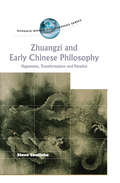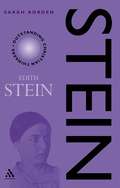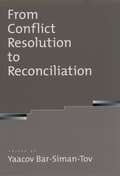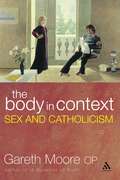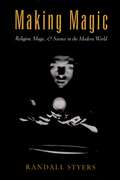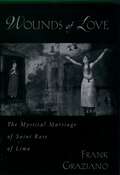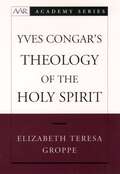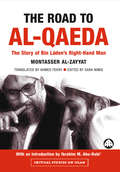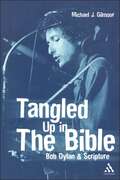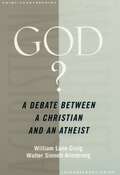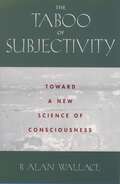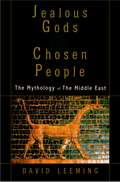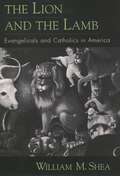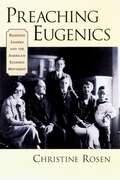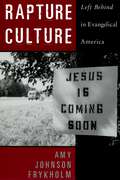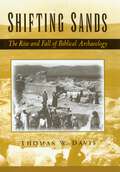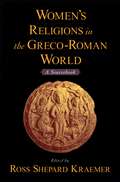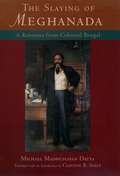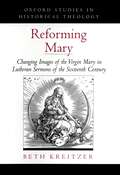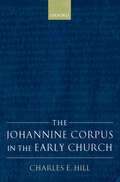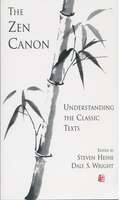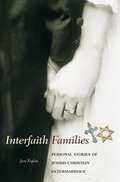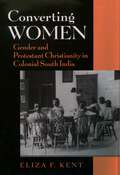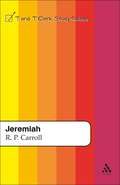- Table View
- List View
Zhuangzi and Early Chinese Philosophy: Vagueness, Transformation and Paradox (Ashgate World Philosophies Series)
by Steve CoutinhoThe Daoist philosopher Zhuangzi (also known as Chuang Tzu), along with Confucius, Lao Tzu, and the Buddha, ranks among the most influential thinkers in the development of East Asian thought. His literary style is humorous and entertaining, yet the philosophical content is extraordinarily subtle and profound. This book introduces key topics in early Daoist philosophy. Drawing on several issues and methods in Western philosophy, from analytical philosophy to semiotics and hermeneutics, the author throws new light on the ancient Zhuangzi text. Engaging Daoism and contemporary Western philosophical logic, and drawing on new developments in our understanding of early Chinese culture, Coutinho challenges the interpretation of Zhuangzi as either a skeptic or a relativist, and instead seeks to explore his philosophy as emphasizing the ineradicable vagueness of language, thought and reality. This new interpretation of the Zhuangzi offers an important development in the understanding of Daoist philosophy, describing a world in flux in which things themselves are vague and inconsistent, and tries to show us a Way (a Dao) to negotiate through the shadows of a "chaotic" world.
Zhuangzi and Early Chinese Philosophy: Vagueness, Transformation and Paradox (Ashgate World Philosophies Series)
by Steve CoutinhoThe Daoist philosopher Zhuangzi (also known as Chuang Tzu), along with Confucius, Lao Tzu, and the Buddha, ranks among the most influential thinkers in the development of East Asian thought. His literary style is humorous and entertaining, yet the philosophical content is extraordinarily subtle and profound. This book introduces key topics in early Daoist philosophy. Drawing on several issues and methods in Western philosophy, from analytical philosophy to semiotics and hermeneutics, the author throws new light on the ancient Zhuangzi text. Engaging Daoism and contemporary Western philosophical logic, and drawing on new developments in our understanding of early Chinese culture, Coutinho challenges the interpretation of Zhuangzi as either a skeptic or a relativist, and instead seeks to explore his philosophy as emphasizing the ineradicable vagueness of language, thought and reality. This new interpretation of the Zhuangzi offers an important development in the understanding of Daoist philosophy, describing a world in flux in which things themselves are vague and inconsistent, and tries to show us a Way (a Dao) to negotiate through the shadows of a "chaotic" world.
Stein: Edith Stein (Outstanding Christian Thinkers)
by Sarah BordenEdith Stein was beatified in 1987 and canonized in 1998 but is still relatively unknown in the English-speaking world. She provides an example of a Christian thinker deeply engaged in the debates of her own day, and her work offers models and insights for addressing the questions of the twenty-first century.Sarah Borden presents an overview of St Edith Stein's life and thought, beginning with her biography. She then covers her early work in phenomenology, her political writings, her studies on women and women's education, as well her later turn to medieval metaphysics, and spiritual and religious texts. The final chapter covers the controversies surrounding Stein's beatification and canonization.Arranged by topic and proceeding largely in chronological order, the book is accessible and aimed at a general audience, although the material is presented in such a way as to be useful to specialists.
From Conflict Resolution to Reconciliation
by Yaacov Bar-Siman-TovThis volume represents an important new step forward in the fields of conflict resolution and peace studies. Its essays argue that, while conflict resolution is well equipped to bring about temporary settlements and brief periods of peace in volatile situations, conventional conflict resolution techniques are not capable of building long-term stability. Instead, the authors contend, practitioners of conflict resolution need to focus more on reconciliation (the restoration of confidence, friendship, and harmony between rivals) than on mere conflict resolution. Whereas traditional conflict resolution has focused primarily on halting quarrels with agreements between leaders on each side of a conflict, reconciliation techniques shift the focus in two ways. First, they take more of a grassroots approach, building agreement among the members of rival communities, not only between leaders. Second, reconciliation takes a long-term view of dispute resolution. While the authors acknowledge that the role of traditional conflict resolution is important in stopping violence and tension, they argue that, in order to achieve stable peace, negotiators and practitioners of conflict resolution must focus much more on what is to be done after an agreement among leaders is reached.
The Body in Context: Sex and Catholicism
by Gareth MooreIn this highly readable book Gareth moore examines some of the principle arguments and styles of argument advanced by Christians, particularly the Roman Catholic Church, in support of Christian standards in sexual ethics.Catholic teaching has sought to present those standards and values as ones which anyone can embrace; ones which they should be able to see as right if only they think about them in the right way. Arguments have been drawn from Scripture and also from philosophy and experience, the latter being particularly important at a time when the Church can no longer 'lay down the law', but has to be able to persuade.But are these arguments valid, or are they flawed? Moore's study covers such wide-ranging topics as sexual pleasure, the purpose of sex, sexual gestures, marriage, contraception and homosexuality; and in these areas, and the more specific sexual issues he covers, he often finds the Church's case to be defective. Though the Church has valuable things to say, its supporting arguments can be unconvincing. Better arguments, he claims, are needed; or, alternatively, the possibility has to be faced that the Churches' teaching needs modification. Whatever the case, the Church needs to do more thinking about sex.
Making Magic: Religion, Magic, and Science in the Modern World (AAR Reflection and Theory in the Study of Religion)
by Randall StyersSince the emergence of religious studies and the social sciences as academic disciplines, the concept of "magic" has played a major role in defining religion and in mediating the relation of religion to science. Across these disciplines, magic has regularly been configured as a definitively non-modern phenomenon, juxtaposed to distinctly modern models of religion and science. Yet this notion of magic has remained stubbornly amorphous. In Making Magic, Randall Styers seeks to account for the extraordinary vitality of scholarly discourse purporting to define and explain magic despite its failure to do just that. He argues that this persistence can best be explained in light of the Western drive to establish and secure distinctive norms for modern identity, norms based on narrow forms of instrumental rationality, industrious labor, rigidly defined sexual roles, and the containment of wayward forms of desire. Magic has served to designate a form of alterity or deviance against which dominant Western notions of appropriate religious piety, legitimate scientific rationality, and orderly social relations are brought into relief. Scholars have found magic an invaluable tool in their efforts to define the appropriate boundaries of religion and science. On a broader level, says Styers, magical thinking has served as an important foil for modernity itself. Debates over the nature of magic have offered a particularly rich site at which scholars have worked to define and to contest the nature of modernity and norms for life in the modern world.
Wounds of Love: The Mystical Marriage of Saint Rose of Lima
by Frank GrazianoThe Peruvian mystic St. Rose of Lima (Isabel Flores y Oliva, 1586-1617) was canonized in 1671 as the first saint of the New World and remains the object of widespread devotion today. In this engrossing new study, Frank Graziano uses the example of St. Rose to explore the meaning of female mysticism and the way in which saints are products of their cultures. Virginity, austerity, eucharistic devotion, incessant mortification, and mystical marriage to Christ characterized the devotional regimen that structured St. Rose's entire life. Many of her mystical practices echo the symptoms of such modern psychological disorders as masochism, depression, hysteria, and anorexia nervosa. Graziano offers a sophisticated argument not only for the origins and meaning of these behaviors in Rose's case, but also for the reason her culture venerated them as signs of sanctity. In the process he explores a wide range of themes, from the idea of suffering as an expression of love to the assimilation of childhood trauma through religious repetition. Graziano also offers a penetrating analysis of the politics of Rose's canonization. He finds that her mystical union with God--bypassing the institutional channels of sacrament and priestly mediation--was inherently subversive to the bureaucratized Church. Canonization was a cooptation by which Rose's competing claim to Christ was integrated into the Catholic canon. The book concludes with a fascinating exploration of mystical eroticism, with its intense experiences of vision and ecstasy. The eroticized suffering of many mystics is shown to be very human in origin: the mystic's wounded love is projected onto a God conceived to accommodate it. Wounds of Love is based on a decade of research in archives, rare books, and an extraordinary range of secondary sources. Introducing an innovative method that integrates history, cultural studies, psychoanalysis, and clinical psychology, this compelling work offers a bold new interpretation of female mysticism.
Yves Congar's Theology of the Holy Spirit (AAR Academy Series)
by Elizabeth Teresa GroppeThe French Dominican theologian Yves Congar is recognized by many as the most important Roman Catholic ecclesiologist of the 20th century. He was the thinker behind some of the major decrees of the Second Vatican council. He was also a leader in the ecumenical movement in Europe throughout most of the century. Despite his importance, there are few books about Congar in English. Congar's pneumatology, argues Groppe, can enrich various ongoing theological discussions, including reflection as to whether the church should be hierarchical or a democracy, the development of "persons in communion" as a framework for contemporary theological anthropology and ecclesiology, and deliberations about the personhood of the Holy Spirit.
The Road to Al-Qaeda: The Story of Bin Laden's Right-Hand Man (Critical Studies on Islam)
by Montasser Al-ZayyatWritten by an Egyptian human rights lawyer, it is the first English-language account of the development of tensions between violent and non-violent factions in radical Islamist movements, from the perspective of an insider. It is also a biography of one of the world's most-wanted terrorists: Egyptian-born Dr Ayman al-Zawahiri. Widely recognized as the man who will take over the leadership of Al-Qaeda after Osama bin Laden, he is also the reputed architect of the Riyadh bombings in Saudi Arabia.*BR**BR*The original version of this book sold widely across the Arabic world. Reproduced in translation here, with an extensive introduction from distinguished scholar Ibrahim Abu Rabi, it stands alone as an unrivalled account of the divisions within militant Islamist ideology. The author provides insight into the internal politics of Islamic Jihad, and the radicalisation of bin Laden's deputy; he examines Zawahiri's opposition to efforts by other militant Islamists to call a ceasefire with the Egyptian authorities; and he narrates the redirection of Zawahiri's activities towards the US and Israel.*BR**BR*As an insight into one of the key minds behind Al-Qaeda this book makes unparalleled and disturbing reading. It is an important document for anyone who seeks to understand how a minority extremist ideology came to have such an impact on world events.
Tangled Up in the Bible: Bob Dylan and Scripture
by Michael J. GilmourBob Dylan has had a profound influence on the shape of modern pop music (folk, rock, blues) and as a modern literary figure. He has also attracted enormous attention from both professional and amateur "interpreters". In this book Gilmour offers a thorough study of Dylan's reading of scriptures. He explores the ways in which Dylan transforms biblical images and concepts when he incorporates them into his literary world; it is an attempt to listen to the echoes of scripture in his published works. Gilmour closely reads Dylan's poems and songs and provides commentaries on several themes found in Dylan's work: the Sermon on the Mount and Jesus; apocalypse, justice and judgement; oppressive religion and religious irony. Through these readings, Gilmour calls attention to the various ways Dylan uses scripture both in an explicit and an implicit manner.
God?: A Debate between a Christian and an Atheist (Point/Counterpoint)
by William Lane Craig Walter Sinnott-ArmstrongThe question of whether or not God exists is profoundly fascinating and important. Now two articulate spokesmen--one a Christian, the other an atheist--duel over God's existence in an illuminating battle of ideas. In God? A Debate between a Christian and an Atheist, William Lane Craig and Walter Sinnott-Armstrong bring to the printed page two debates they held before live audiences, preserving all the wit, clarity, and immediacy of their public exchanges. Avoiding overly esoteric arguments, they directly address issues such as religious experience, the Bible, evil, eternity, the origin of the universe, design, and the supposed connection between morality and the existence of God. Employing sharp and humorous arguments, each philosopher strikes quickly to the heart of his opponent's case. For example, Craig claims that we must believe in God in order to explain objective moral values, such as why rape is wrong. Sinnott-Armstrong responds that what makes rape wrong is the harm to victims of rape, so rape is immoral even if there is no God. By assuming a traditional concept of God in their discussion, the authors ensure that they are truly addressing each other's viewpoints and engaging in a disagreement over a unified issue. The book is composed of six chapters that alternate between Craig and Sinnott-Armstrong, so that each separate point can be discussed as it arises. Ideal for courses in the philosophy of religion and introduction to philosophy, this lively and direct dialogue will stimulate students and anyone interested in the existence of God, regardless of whether or not they believe in God.
The Taboo of Subjectivity: Toward a New Science of Consciousness
by B. Alan WallaceThis book takes a bold new look at ways of exploring the nature, origins, and potentials of consciousness within the context of science and religion. Alan Wallace draws careful distinctions between four elements of the scientific tradition: science itself, scientific realism, scientific materialism, and scientism. Arguing that the metaphysical doctrine of scientific materialism has taken on the role of ersatz-religion for its adherents, he traces its development from its Greek and Judeo-Christian origins, focusing on the interrelation between the Protestant Reformation and the Scientific Revolution. He looks at scientists' long term resistance to the firsthand study of consciousness and details the ways in which subjectivity has been deemed taboo within the scientific community. In conclusion, Wallace draws on William James's idea for a "science of religion" that would study the nature of religious and, in particular, contemplative experience. In exploring the nature of consciousness, this groundbreaking study will help to bridge the chasm between religious belief and scientific knowledge. It is essential reading for philosophers and historians of science, scholars of religion, and anyone interested in the relationship between science and religion.
Jealous Gods and Chosen People: The Mythology of the Middle East
by David LeemingEsteemed scholar David Leeming, who has authored more than twelve books on mythology, here offers the first comprehensive narrative study of the mythology of the Middle East, that tumultuous region that was the cradle of civilization. Leeming begins with a brief, engaging history of the Middle East, spanning Neolithic cultures, the Bronze Age and the Iron Age, the invention of writing and the rise of Egypt and Babylonia, Israel and Roman rule, and the early history of the Jews, Christians, and Muslims. This is followed by an in-depth discussion of the mythology of the region, covering individual pantheons, cosmic myths, mythic heroes, and much more. Leeming ranges from prehistoric figures such as the Mother Goddess of Çatal Hüyük to Mesopotamian gods such as Marduk and mythic heroes such as Gilgamesh, to the pantheon of Egyptian mythology, including the falcon-headed sky-sun god Horus and jackal-headed Anubis. The author also offers an illuminating exploration of the mythology of the three great monotheistic religions of the region: Judaism, Christianity, and Islam. In a provocative Epilogue, Leeming depicts today's crisis in the Middle East as "violent, clearly immoral, and illegal actions" justified by "what can only be called myths." He notes that fundamentalists in the area's three religions all see their way as the only way, forgetting that myths represent truths that are spiritual and philosophical--not historical events that can be used to justify acts of violence. With key maps, illustrations, bibliography, and index, Jealous Gods and Chosen People provides an inclusive, authoritative, and captivating account of a mythology that remains a potent--and often destructive--force in the world today.
The Lion and the Lamb: Evangelicals and Catholics in America
by William M. SheaOne of the most intriguing questions in contemporary American Christianity is whether the recent warming of relations between Catholics and conservative evangelicals promises a thaw in the ice age that has lasted since the sixteenth century. American evangelical Protestants and Roman Catholics have hated and suspected one another since colonial times. In the twentieth century, however, each community has experienced radical change, and this has led to a change in the relationship between the two. In this book William Shea examines the history of this troubled relationship and the signs of potential reconciliation. His springboard is the recent publicity given to the 1993 document Evangelicals and Catholics Together, in which several well-known figures from each camp, acting as individuals, signed a statement affirming much more common theological and social ground than any other American Catholic-evangelical group had ever done. Looking back, Shea surveys the long and very bitter history of published recriminations that have flown back and forth between Catholics and many kinds of Protestants since the 16th century. He makes the case that Catholics and conservative Protestants reacted along parallel lines to western "modernity" - especially naturalistic evolution and higher criticism of the Bible). That deeper history leads him to the more recent history that has partially overcome the severe Catholic-evangelical antagonisms. Here he focuses on the rise of "neo-evangelicals" associated with Billy Graham and the National Association of Evangelicals and on the changes with the Catholic church since Vatican II. He goes on to offer systematic interpretations of recent evangelical literature on Catholics and Catholic literature on evangelicals. The book ends with some historical, but also theological, social and personal conclusions. This accessible, groundbreaking, and timely study will be indispensable reading for all interested in the religious landscape of America today.
Preaching Eugenics: Religious Leaders and the American Eugenics Movement
by Christine RosenWith our success in mapping the human genome, the possibility of altering our genetic futures has given rise to difficult ethical questions. Although opponents of genetic manipulation frequently raise the specter of eugenics, our contemporary debates about bioethics often take place in a historical vacuum. In fact, American religious leaders raised similarly challenging ethical questions in the first half of the twentieth century. Preaching Eugenics tells how Protestant, Catholic, and Jewish leaders confronted and, in many cases, enthusiastically embraced eugenics-a movement that embodied progressive attitudes about modern science at the time. Christine Rosen argues that religious leaders pursued eugenics precisely when they moved away from traditional religious tenets. The liberals and modernists-those who challenged their churches to embrace modernity-became the eugenics movement's most enthusiastic supporters. Their participation played an important part in the success of the American eugenics movement. In the early twentieth century, leaders of churches and synagogues were forced to defend their faiths on many fronts. They faced new challenges from scientists and intellectuals; they struggled to adapt to the dramatic social changes wrought by immigration and urbanization; and they were often internally divided by doctrinal controversies among modernists, liberals, and fundamentalists. Rosen draws on previously unexplored archival material from the records of the American Eugenics Society, religious and scientific books and periodicals of the day, and the personal papers of religious leaders such as Rev. John Haynes Holmes, Rev. Harry Emerson Fosdick, Rev. John M. Cooper, Rev. John A. Ryan, and biologists Charles Davenport and Ellsworth Huntington, to produce an intellectual history of these figures that is both lively and illuminating. The story of how religious leaders confronted one of the era's newest "sciences," eugenics, sheds important new light on a time much like our own, when religion and science are engaged in critical and sometimes bitter dialogue.
Rapture Culture: Left Behind in Evangelical America
by Amy Johnson FrykholmIn the "twinkling of an eye" Jesus secretly returns to earth and gathers to him all believers. As they are taken to heaven, the world they leave behind is plunged into chaos. Cars and airplanes crash and people search in vain for loved ones. Plagues, famine, and suffering follow. The antichrist emerges to rule the world and to destroy those who oppose him. Finally, Christ comes again in glory, defeats the antichrist and reigns over the earth. This apocalyptic scenario is anticipated by millions of Americans. These millions have made the Left Behind series--novels that depict the rapture and apocalypse--perennial bestsellers, with over 40 million copies now in print. In Rapture Culture, Amy Johnson Frykholm explores this remarkable phenomenon, seeking to understand why American evangelicals find the idea of the rapture so compelling. What is the secret behind the remarkable popularity of the apocalyptic genre? One answer, she argues, is that the books provide a sense of identification and communal belonging that counters the "social atomization" that characterizes modern life. This also helps explain why they appeal to female readers, despite the deeply patriarchal worldview they promote. Tracing the evolution of the genre of rapture fiction, Frykholm notes that at one time such narratives expressed a sense of alienation from modern life and protest against the loss of tradition and the marginalization of conservative religious views. Now, however, evangelicalism's renewed popular appeal has rendered such themes obsolete. Left Behind evinces a new embrace of technology and consumer goods as tools for God's work, while retaining a protest against modernity's transformation of traditional family life. Drawing on extensive interviews with readers of the novels, Rapture Culture sheds light on a mindset that is little understood and far more common than many of us suppose.
Shifting Sands: The Rise and Fall of Biblical Archaeology
by Thomas W. DavisBefore the 1970s, "biblical archaeology" was the dominant research paradigm for those excavating the history of Palestine. Today this model has been "weighed in the balance and found wanting." Most now prefer to speak of "Syro/Palestinian archaeology." This is not just a nominal shift but reflects a major theoretical and methodological change. It has even been labeled a revolution. In the popular mind, however, biblical archaeology is still alive and well. In Shifting Sands, Thomas W. Davis charts the evolution and the demise of the discipline. Biblical archaeology, he writes, was an attempt to ground the historical witness of the Bible in demonstrable historical reality. Its theoretical base lay in the field of theology. American mainstream Protestantism strongly resisted the inroads of continental biblical criticism, and sought support for their conservative views in archaeological research on the ancient Near East. The Bible was the source of the agenda for biblical archaeology, an agenda that was ultimately apologetical. Davis traces the fascinating story of the interaction of biblical studies, theology, and archaeology in Palestine, and the remarkable individuals who pioneered the discipline. He highlights the achievements of biblical archaeologists in the field, who gathered an immense body of data. By clarifying the theoretical and methodological framework of the original excavators, he believes, these data can be made more useful for current research, allowing a more sober, reasoned judgment of both the accomplishments and the failures of biblical archaeology.
Women's Religions in the Greco-Roman World: A Sourcebook
by Ross Shepard KraemerThis is a substantially expanded and completely revised edition of a book originally published in 1988 as Maenads, Martyrs, Matrons, Monastics. The book is a collection of translations of primary texts relevant to women's religion in Western antiquity, from the fourth century BCE to the fifth century CE. The selections are taken from the plethora of ancient religions, including Judaism and Christianity, and are translated from the six major languages of the Greco-Roman world: Greek, Latin, Aramaic, Hebrew, Syriac, and Coptic. The texts are grouped thematically in six sections: Observances, Rituals, and Festivals; Researching Real Women: Documents to, from and by Women; Religious Office; New Religious Affiliation and Conversion; Holy, Pious, and Exemplary Women; and The Feminine Divine. Women's Religions in the Greco-Roman World provides a unique and invaluable resource for scholars of classical antiquity, early Christianity and Judaism, and women's religion more generally.
The Slaying of Meghanada: A Ramayana from Colonial Bengal
by Michael Madhusudan Datta"The poem is rising into splendid popularity. Some say it is better than Milton-but that is all bosh-nothing can be better than Milton; many say it licks Kalidasa; I have no objection to that. I don't think it impossible to equal Virgil, Kalidasa, and Tasso." Michael Madhusudan Datta wrote this in a letter to a friend about his verse narrative, The Slaying of Meghanada (1861). The epic, a Bengali version of the Ramayana story in which Ravana, not Rama, is the hero, has become a classic of Indian literature. Datta lived in Bengal at the height of what is frequently called the Bengal Renaissance, a time so labeled for its reinvigoration and reconfiguration of the Hindu past and for the florescence of the literary arts. It was also a period when the Bengali city of Kolkata was a center of world trade-the second city of the British empire-and thus a site of cultural exchange between India and the West. Datta was the perfect embodiment of this time and place. The Slaying of Meghanada is deeply influenced by western epic tradition, and is sprinkled with nods to Homer, Milton, and Dante. Datta's deft intermingling of western and eastern literary traditions brought about a sea change in South Asian literature, and is generally considered to mark the dividing line between pre-modern and modern Bengali literature. Datta's masterpiece is now accessible to readers of English in Clinton Seely's elegant translation, which captures both the sense and the spirit of the original. The poem is supplemented by an extensive introduction, notes, and a glossary.
Reforming Mary: Changing Images of the Virgin Mary in Lutheran Sermons of the Sixteenth Century (Oxford Studies in Historical Theology)
by Beth KreitzerCatholics and Protestants have, since the earliest days of the Reformation, held markedly different views about the Virgin Mary. In Reforming Mary Beth Kreitzer examines the development of Lutheran views on this subject as expressed in 16th-century Lutheran published sermons, starting with the earliest of Luther's own Reformation sermons. She shows that from the beginning Lutherans rejected much of the theology and piety that surrounded Mary in Catholicism, especially her status as heavenly queen and intercessor with Christ. They affirmed those orthodox teachings about Mary that related to Christ (the Virgin's role as Theotokos, the virgin birth) and by extension Mary's purity, or perpetual virginity. As time went on Lutheran preachers showed less interest in Mary as a topic and by the later part of the century showed an increasingly harsh and critical view of her. These later sermons reveal a new willingness, in opposition to received tradition, to impute sin to Mary. Kreitzer attributes this changed attitude to the increasing distance of Lutherans from their Catholic roots, the logical results of theological changes in the Reformation, and a perception of an increased threat of re-catholicization. Finally, she shows, Mary was pressed into service by preachers who endeavored to instruct the laity in both what to believe and how to live, making a causal connection between being a good Christian and being a good citizen of society. In this context, Mary was used as a role model and was often promoted as an exemplar for females in ways that served to constrain and domesticate women, placing them more firmly under male authority. But despite the attempts by preachers to domesticate and mold her, Kreitzer argues, the Lutheran Mary remains a complex and paradoxical figure.
The Johannine Corpus In The Early Church
by Charles E. HillHow were the Johannine books of the New Testament received by second-century Christians and accorded scriptural status? Charles E. Hill offers a fresh and detailed examination of this question. He dismantles the long-held theory that the Fourth Gospel was generally avoided or resisted by orthodox Christians, while being treasured by various dissenting groups, throughout most of the second century. Integrating a wide range of literary and non-literary sources, this book demonstrates the failure of several old stereotypes about the Johannine literature. It also collects the full evidence for the second-century Church's conception of these writings as a group: the Johannine books cannot be isolated from each other but must be recognized as a corpus.
The Zen Canon: Understanding the Classic Texts
by Dale S. WrightBodhidharma, its first patriarch, reputedly said that Zen Buddhism represents "a special transmission outside the teaching/Without reliance on words and letters." This saying, along with the often perplexing use of language (and silence) by Zen masters, gave rise to the notion that Zen is a "lived religion," based strictly on non-linguistic practice and lacking a substantial canon of sacred texts. Even those who recognize the importance of Zen texts commonly limit their focus to a few select texts without recognizing the wide variety of Zen literature. This collection of previously unpublished essays argues that Zen actually has a rich and varied literary heritage. Among the most significant textual genres are hagiographic accounts and recorded sayings of individual Zen masters, koan collections and commentaries, and rules for monastic life. During times of political turmoil in China and Japan, these texts were crucial to the survival and success of Zen, and they have for centuries been valued by practitioners as vital expressions of the truth of Zen. This volume offers learned yet accessible studies of some of the most important classical Zen texts, including some that have received little scholarly attention (and many of which are accessible only to specialists). Each essay provides historical, literary, and philosophical commentary on a particular text or genre. Together, they offer a critique of the "de facto canon" that has been created by the limited approach of Western scholarship, and demonstrate that literature is a diverse and essential part of Zen Buddhism.
Interfaith Families: Personal Stories of Jewish-Christian Intermarriage
by Jane KaplanChristmas or Hanukkah? Bris or baptism? Church or synagogue? As the number of Jewish-Christian marriages in America continues to rise, couples find themselves searching for ways to navigate the choppy waters of interfaith families. Children, extended family, and communities can all contribute to the strain a marriage might feel when religion is an issue. Should the children be raised in one faith and not the other? Who should decide which holidays to celebrate and how? How can couples deal with extended family members who may not understand or accept the interfaith marriage? Here, couples in Jewish-Christian marriages describe their experiences and reveal intimate details of their lives as members of these unique families. Without being prescriptive, this book offers examples of the successes and failures, struggles and triumphs of such religiously mixed families, shedding light on new ways to approach everyday situations and major life decisions.The couples whose stories are found in these pages describe how they tackled these topics. Many decided to maintain a Jewish household, while others decided on a Christian family life. Still others found ways to incorporate both religions, and in some cases one partner converted to the other's faith. In all situations, the couples describe their sacrifices, feelings, frustrations, and religious behaviors and practices. Readers will find an array of reactions and approaches in these pages, and will come away with fresh insight into interfaith families in general and Jewish-Christian marriage in particular.
Converting Women: Gender and Protestant Christianity in Colonial South India
by Eliza F. KentWith the emergence of Hindu nationalism, the conversion of Indians to Christianity has become a volatile issue, erupting in violence against converts and missionaries. At the height of British colonialism, however, conversion was a path to upward mobility for low-castes and untouchables, especially in the Tamil-speaking south of India. In this book, Eliza F. Kent takes a fresh look at these conversions, focusing especially on the experience of women converts and the ways in which conversion transformed gender roles and expectations. Kent argues that the creation of a new, "respectable" community identity was central to the conversion process for the agricultural laborers and artisans who embraced Protestant Christianity under British rule. At the same time, she shows, this new identity was informed as much by elite Sanskritic customs and ideologies as by Western Christian discourse. Stigmatized by the dominant castes for their ritually polluting occupations and relaxed rules governing kinship and marriage, low-caste converts sought to validate their new higher-status identity in part by the reform of gender relations. These reforms affected ideals of femininity and masculinity in the areas of marriage, domesticity, and dress. By the creation of a "discourse of respectability," says Kent, Tamil Christians hoped to counter the cultural justifications for their social, economic, and sexual exploitation at the hands of high-caste landowners and village elites. Kent's focus on the interactions between Western women missionaries and the Indian Christian women not only adds depth to our understanding of colonial and patriarchal power dynamics, but to the intricacies of conversion itself. Posing an important challenge to normative notions of conversion as a privatized, individual moment in time, Kent's study takes into consideration the ways that public behavior, social status, and the transformation of everyday life inform religious conversion.
Jeremiah (T&T Clark Study Guides)
by Robert P. CarrollConcise yet comprehensive, manageable and affordable, T&T Clark Study Guides are an invaluable resource for students, preachers and Bible study leaders. Each book in the series gives the reader a thorough introduction to a particular book of the Bible or the Apocrypha and includes:• An introduction to the contents of the particular biblical book• A balanced survey of the important critical issues• Attention to literary, historical, sociological, and theological perspectives• Suggestions about critical appropriation of the text by the contemporary reader• Reference to other standard works through annotated bibliographies.All the books in the series, formerly published by Sheffield Academic Press, are by leading biblical scholars and the authors have drawn on their scholarly expertise as well as their experience as teachers of university and college students.
